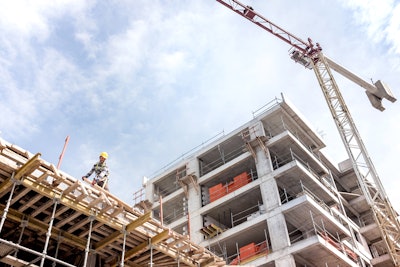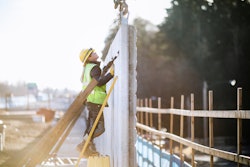
A new survey shows 94% of contractors are having difficulty filling job openings, and more than half say that’s causing projects to be delayed.
The biggest problem contractors see when it comes to the labor shortage – at 62% – is job candidates with a lack of skills.
Those are some of the findings in a new survey released by the Associated General Contractors, which is calling on the federal government to ramp up funding for training and construction-focused education in schools.
“What this year's survey makes clear is that our nation's failure to invest in construction workforce, education and training programs is having a real, measurable impact on the country's ability to build infrastructure and other construction projects,” said AGC CEO Jeff Shoaf during a webinar August 28 to release the survey. “These impacts include higher costs, longer construction schedules and a significant number of delayed or canceled projects.”
Difficulty finding workers is nothing new in the construction industry, but as more workers hit retirement age, the problem continues to worsen. For example, AGC’s 2019 survey reported 80% of contractors having difficulty filling positions.
Five years later, that figure has jumped 14 percentage points to 94%, according to the new survey.
The lack of workers was the top reason contractors gave for having projects delayed. Of the 80% of respondents who faced project delays, 54% said it was due to a shortage of workers.
Along with candidates lacking skills, new hires are not showing up at all or quitting soon after being hired, 50% of contractors reported.
Shoaf noted another recent AGC study “found that federal officials invest four times more each year encouraging students to earn four-year degrees than they do supporting workforce development programs for fields like construction.”
U.S. immigration policy is another cause of the worker shortage, according to Shoaf.
“Federal officials not only fail to invest in construction workforce development, they also make it difficult for construction firms to take advantage of the very few visa programs that are available to the industry.”
The survey noted that only 7% of contractors participate in the H-2B visa or other temporary work-visa programs.
“What are we going to do to create a viable legal pipeline for new entrants into the construction workforce that are coming out of the immigrant community?” Shoaf said. “That is something that's always been important to construction labor growth and to economic growth for the country. And I really feel like a lot of people overlook it and tend to take a political stance rather than a practical stance when they talk about it.”
On the contractor side on attracting and retaining workers, the AGC survey showed 61% of contractors had raised base pay rates more than a year ago. It also showed that 42% had increased spending on professional development and training.
To try to attract younger workers, 57% of contractors have added or increased their presence on social media, and 51% reported engaging with career programs at high schools, colleges and technical institutions.
Jami Klomp, human resources manager for Hardman Construction in Ludington, Michigan, noted her company’s concern about safety due to new hires’ lack of experience. The labor shortage combined with that worry led the company to create a mentor and training program about six years ago.
“We will train you. We will give you all the support that you might need and just get you where you need to be,” Klomp said of new hires. “So that retention piece has been a huge, huge part for us.”
Gita Murphy, founder and CEO of San Diego design-build firm Rore Inc., echoed the concerns with finding workers and said it would take a long-term, broad-based approach to remedy.
“This is a very, very complicated issue,” she said. “I don't see it going away in the near term. I think it's going to take a lot of parties to come together and work.”
To see the full 2024 AGC & Arcoro Workforce Survey results, click here.















